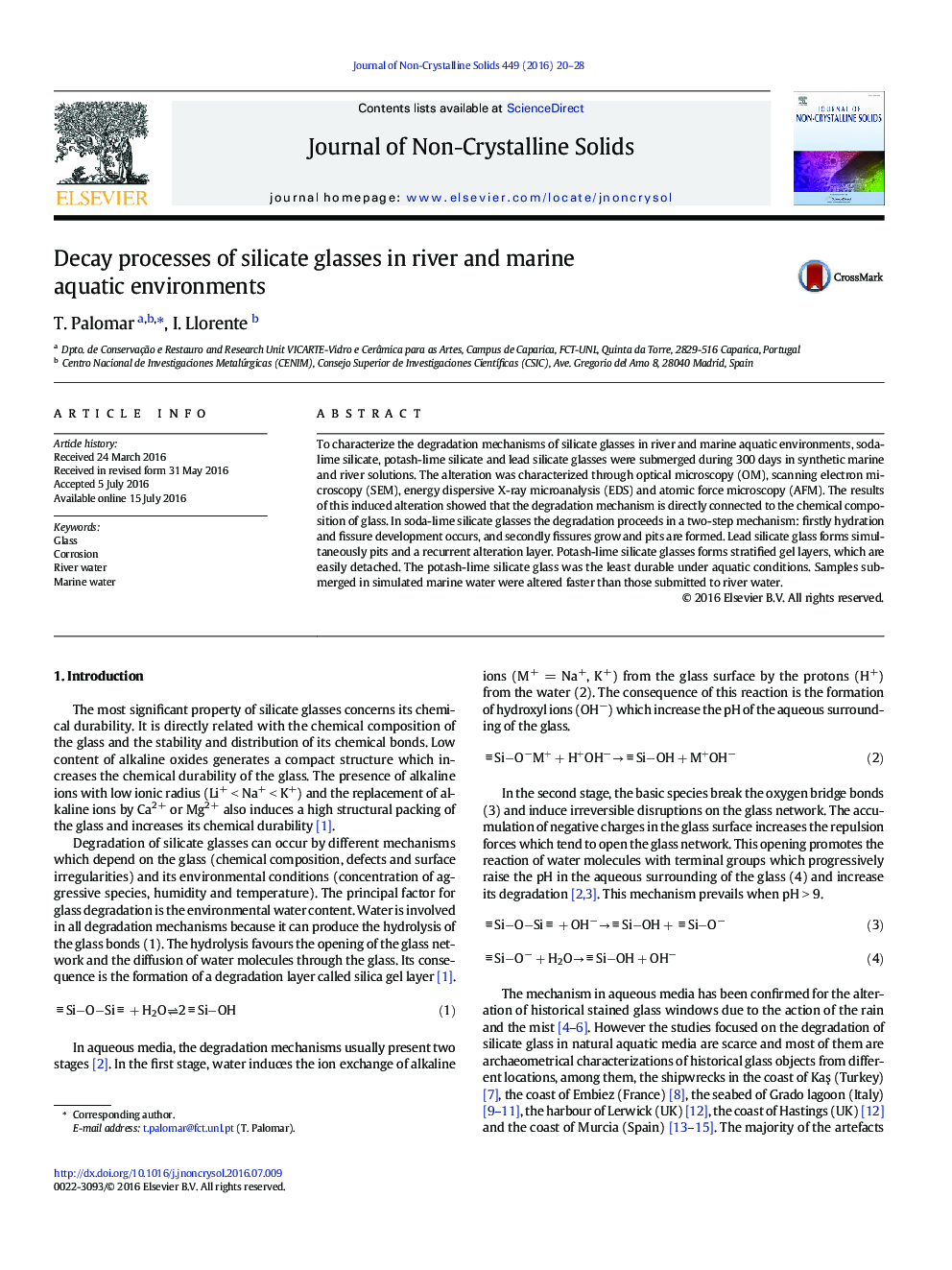| Article ID | Journal | Published Year | Pages | File Type |
|---|---|---|---|---|
| 1480187 | Journal of Non-Crystalline Solids | 2016 | 9 Pages |
•Degradation mechanism is directly connected to the chemical composition of glass and with the salts diluted in the water.•Soda-lime silicate glasses presented a two-step degradation mechanism with formation of fissures, followed by pits development•Potash-lime silicate glasses formed degradation layers on the glass surface.•Samples submerged in marine water were altered faster than those submitted to river water•High concentration of Na+ ions in marine media favoured the opening of the glass network and the acceleration of the degradation rate
To characterize the degradation mechanisms of silicate glasses in river and marine aquatic environments, soda-lime silicate, potash-lime silicate and lead silicate glasses were submerged during 300 days in synthetic marine and river solutions. The alteration was characterized through optical microscopy (OM), scanning electron microscopy (SEM), energy dispersive X-ray microanalysis (EDS) and atomic force microscopy (AFM). The results of this induced alteration showed that the degradation mechanism is directly connected to the chemical composition of glass. In soda-lime silicate glasses the degradation proceeds in a two-step mechanism: firstly hydration and fissure development occurs, and secondly fissures grow and pits are formed. Lead silicate glass forms simultaneously pits and a recurrent alteration layer. Potash-lime silicate glasses forms stratified gel layers, which are easily detached. The potash-lime silicate glass was the least durable under aquatic conditions. Samples submerged in simulated marine water were altered faster than those submitted to river water.
